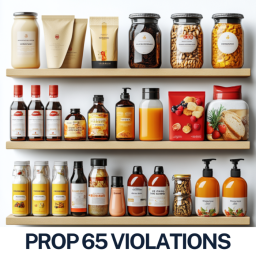
In October 2025, the U.S. Patent and Trademark Office (USPTO) announced a major proposed rulemaking that could reshape how inter partes review (IPR) petitions are handled. The proposal focuses on discretionary denials the Office’s ability to reject IPR petitions even when they meet the statutory merits threshold.
This move could significantly affect patent litigation strategy, especially for companies defending their intellectual property or challenging competitors’ patents.
What Is the USPTO Proposing to Change?
Short answer: The USPTO wants to make it easier to deny IPR petitions that duplicate earlier litigation or create overlapping proceedings.
Under the Notice of Proposed Rulemaking (NPRM) issued October 16, 2025, the Office outlined several new rules that would formalize when it can decline to institute an IPR.
Key proposed changes include:
- Bar on duplicative challenges: The USPTO would generally deny petitions where another proceeding (district court, ITC, or prior IPR) has already ruled or is likely to rule on the same patent claims.
- Restrictions on serial and parallel petitions: Petitioners filing multiple IPRs on the same patent would have to show “good cause.”
- Mandatory stipulations: Petitioners may need to agree not to pursue invalidity arguments in other forums under §§ 102/103 if the IPR is instituted.
- Exceptional circumstances clause: Institution could still occur despite overlap, but only under narrowly defined “exceptional” situations.
The proposal reflects the USPTO’s intent to reduce redundant challenges and strengthen confidence in patent rights.
Why Is the USPTO Making These Changes Now?
Short answer: To cut down on repetitive reviews and increase patent stability.
Over the past decade, critics have argued that the PTAB’s frequent institution of overlapping IPRs undermines innovation by allowing multiple attacks on the same patent. Patent owners, particularly in the pharmaceutical and tech sectors, say the system encourages “patent harassment.”
The USPTO’s new rulemaking aims to strike a balance preserving IPR as a quality control tool while reducing what it sees as unnecessary litigation overlap.
Background: The “Discretionary Denial” debate
The authority to deny institution under 35 U.S.C. § 314(a) and Fintiv factors (from Apple v. Fintiv, Inc.) has been one of the most contested issues at the PTAB.
This proposed rule attempts to codify and refine those practices after years of fluctuating guidance under different USPTO Directors.
How Will These Proposed IPR Rules Affect Patent Owners?
Short answer: They’re likely to benefit patent owners by limiting repeat challenges and giving greater certainty.
If implemented, these rules would:
- Reduce exposure to multiple IPRs on the same claims.
- Allow patent owners to rely more on prior court decisions to avoid additional PTAB reviews.
- Create earlier opportunities to argue for discretionary denial before the PTAB decides whether to institute.
For patent-heavy industries like pharmaceuticals, biotech, and semiconductors, this could enhance patent durability and simplify defense strategies.
What About Petitioners and Tech Companies?
Short answer: Petitioners will face tighter restrictions and may lose flexibility in litigation strategy.
Under the proposed framework:
- Petitioners can’t easily file multiple or staggered petitions targeting the same claims.
- They may have to choose between an IPR and district court invalidity defenses.
- They’ll need to carefully time filings to avoid being deemed “parallel” or “serial” under the new definitions.
For large tech companies and startups alike, this could make early strategy alignment critical—deciding where to challenge patent validity and how to coordinate with pending litigation.
When Would These USPTO Rule Changes Take Effect?
Short answer: Not yet. These are still proposed rules.
The USPTO opened the public comment period in October 2025, inviting feedback before finalizing the rules. Final adoption could occur in mid to late 2026, depending on revisions and public response.
Until then, current PTAB procedures remain in place. Parties filing IPR petitions must still account for existing discretionary denial practices, but formal codification will wait until the rulemaking process concludes.
(See the full proposal on the Federal Register’s official USPTO rulemaking page for details.)
What Do These Proposed Rules Mean in Practice?
Many practitioners and innovators are asking how these proposed changes will work day-to-day. The short answer: fewer IPRs are likely to be instituted, especially when claims have already been reviewed or are under review in another forum. By tightening the rules, the USPTO expects a noticeable drop in repeat or overlapping cases, streamlining the process and reducing redundancy.
Importantly, these rules don’t eliminate a party’s right to challenge a patent. Instead, they channel those challenges more efficiently, encouraging petitioners to file once, in the right forum, with strong grounds. Petitioners who file multiple or late-stage petitions will face stricter scrutiny unless they can show “good cause.”
Another key area of curiosity is the “exceptional circumstances” clause. The USPTO has not yet defined this term precisely, but it’s expected to apply when broader public interest or fairness considerations justify another review such as when prior adjudications may have missed critical prior art.
The 2025 proposal also revises earlier Director Vidal–era drafts, narrowing them to focus on procedural fairness and consistency rather than discretionary flexibility. In other words, the new framework aims to make decisions more predictable and reduce case-by-case uncertainty for patent owners and challengers alike.
Why Does This Matter for Innovation and Litigation Strategy?
The new rules would push companies to:
- Coordinate early between litigation and IPR strategy.
- Avoid serial petitions unless they can demonstrate good cause.
- Monitor prior adjudications before filing challenges.
For innovators and IP counsel, the proposed changes represent a philosophical shift: favoring patent reliability and administrative efficiency over open-ended review access.
However, critics argue this could let “bad patents” survive longer and make it harder to challenge low-quality claims, especially for small entities without deep litigation budgets.
How Juris Law Group Can Help
At Juris Law Group, our patent litigation and PTAB team helps clients anticipate and navigate USPTO procedural shifts.
We assist clients in:
- Assessing how these proposed changes affect current and future IPR filings.
- Preparing comments during the rulemaking period to influence the final rules.
- Coordinating litigation and IPR strategies to avoid discretionary denial triggers.
- Advising on stipulations and procedural safeguards under the new framework.
Whether you’re protecting valuable IP or challenging competitors’ patents, we help ensure your strategy aligns with the USPTO’s evolving standards.
Frequently Asked Questions (FAQ)
What is an IPR?
An inter partes review is a trial proceeding before the PTAB to review the validity of a patent claim based on prior art.
Can I still file multiple IPRs on the same patent?
Yes, but under the proposed rule, you’ll need to show “good cause,” especially if earlier petitions addressed the same claims.
Will district court rulings automatically block IPRs?
Not automatically, but prior adjudication of the same claims will weigh heavily toward discretionary denial.
When will the final rule be issued?
Likely sometime in 2026, after the USPTO reviews public comments.
What IS RECOMMENDED TO DO NOW?
Monitor the proposal, submit comments if relevant, and consult counsel on how to position current or upcoming petitions.
Key Takeaway
The USPTO’s October 2025 proposal marks a pivotal shift in IPR practice, one that could make patent rights more stable but IPR challenges more selective. For businesses and counsel, now is the time to review ongoing patent disputes and prepare for a more strategic, streamlined post-grant process.















